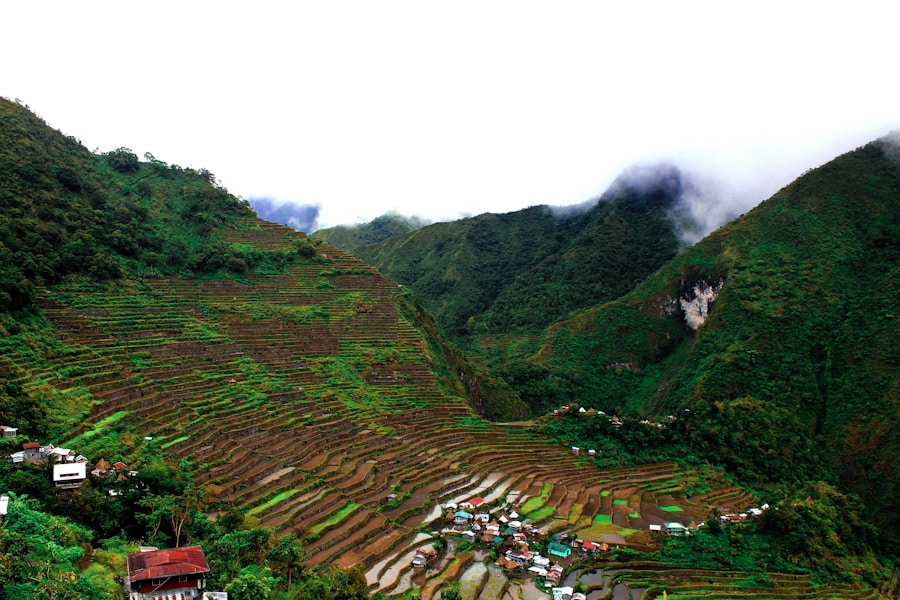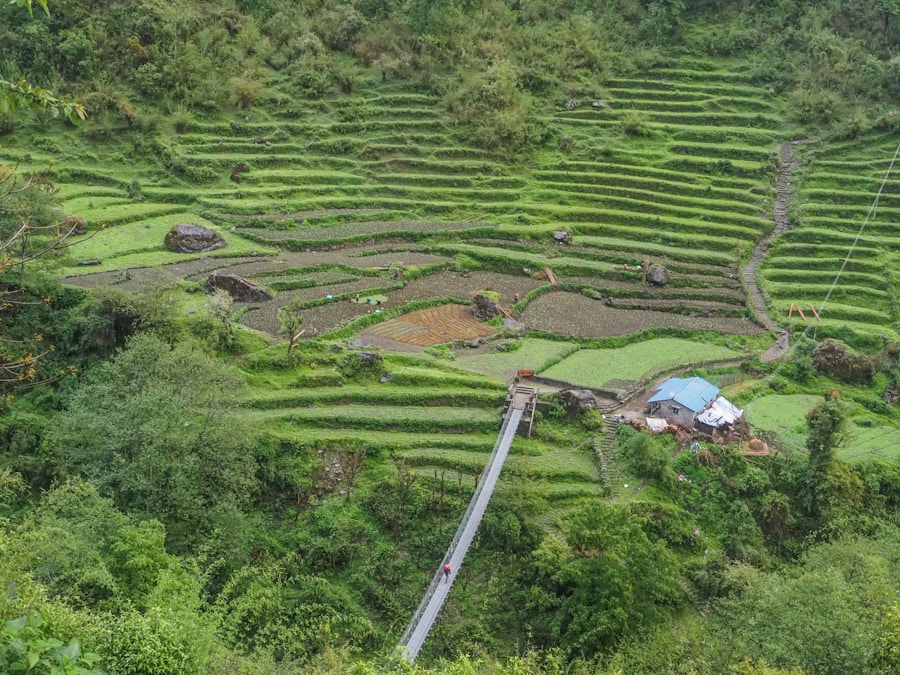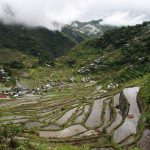Download links
How to install Marvel at Banaue Rice Terraces APK?
1. Tap the downloaded Marvel at Banaue Rice Terraces APK file.
2. Touch install.
3. Follow the steps on the screen.
Description
The Banaue Rice Terraces, often referred to as the “Eighth Wonder of the World,” boast a rich history that dates back over 2,000 years. These terraces were carved into the mountains of Ifugao Province in the Philippines by the indigenous Ifugao people, who developed sophisticated agricultural techniques to cultivate rice in a challenging mountainous environment. The construction of these terraces is believed to have begun around 2000 B.C., although some estimates suggest that the actual origins may be even older.
The terraces are not merely agricultural fields; they represent a deep connection between the Ifugao people and their land, showcasing their ingenuity and resilience in adapting to their environment. The historical significance of the Banaue Rice Terraces extends beyond their agricultural function. They are a testament to the Ifugao’s cultural identity and social structure.
The terraces were built using traditional methods, relying on hand tools and local materials, which reflects the community’s collective effort and cooperation. Over generations, the Ifugao have passed down their knowledge of rice cultivation, irrigation systems, and terrace maintenance through oral traditions and practical training. This intergenerational transfer of knowledge has been crucial in preserving not only the terraces themselves but also the cultural practices associated with rice farming.
Key Takeaways
- The Banaue Rice Terraces were built over 2,000 years ago by the Ifugao people, making them a UNESCO World Heritage site and a testament to ancient engineering and agricultural practices.
- The terraces were carved into the mountainside using only hand tools and are still used for farming today, showcasing the ingenuity and skill of the Ifugao people.
- The terraces are not only a marvel of engineering, but also hold deep cultural significance for the Ifugao people, representing their connection to the land and their ancestors.
- Efforts to preserve the Banaue Rice Terraces include community-led initiatives, government support, and sustainable tourism practices to ensure the terraces remain intact for future generations.
- The best time to visit the Banaue Rice Terraces is during the planting and harvesting seasons, which typically occur in May and October, respectively, offering a unique and immersive experience of the Ifugao farming traditions.
- While tourism has brought economic opportunities to the area, it has also led to environmental degradation and cultural commodification, highlighting the need for responsible and sustainable tourism practices to protect the Banaue Rice Terraces.
The Engineering Feat of Banaue Rice Terraces
Efficient Water Distribution
The terraces are built on steep slopes, with each level meticulously designed to capture rainwater and manage runoff. This intricate system allows for efficient water distribution, ensuring that each terrace receives adequate moisture for rice cultivation. The Ifugao people ingeniously constructed a network of canals and dikes that channel water from nearby rivers and streams directly to the fields, minimizing water loss and maximizing agricultural productivity.
Construction Techniques
The construction techniques employed in building the terraces are equally impressive. The Ifugao utilized locally sourced materials such as stone, mud, and bamboo to create sturdy walls that support the terraces. These walls are not only functional but also aesthetically pleasing, blending harmoniously with the natural landscape.
The engineering principles applied in the construction of the Banaue Rice Terraces have garnered admiration from architects and engineers worldwide, who recognize them as an exemplary model of sustainable agriculture.
The Cultural Significance of Banaue Rice Terraces

The cultural significance of the Banaue Rice Terraces extends far beyond their agricultural value; they are deeply intertwined with the spiritual beliefs and practices of the Ifugao people. The terraces are often viewed as sacred spaces, reflecting the Ifugao’s reverence for nature and their ancestral heritage. Rice is not merely a staple food; it holds profound cultural importance, symbolizing life, fertility, and prosperity.
Traditional rituals and ceremonies centered around rice planting and harvesting are integral to Ifugao culture, reinforcing community bonds and preserving ancestral traditions. Moreover, the terraces serve as a living testament to the Ifugao’s social organization and communal values. The construction and maintenance of the terraces require collective effort, fostering a sense of unity among community members.
This collaborative spirit is evident during communal workdays known as “bayanihan,” where families come together to assist one another in farming activities. Such practices not only ensure the sustainability of rice production but also strengthen social ties within the community. The cultural landscape created by the Banaue Rice Terraces is recognized by UNESCO as a World Heritage Site, underscoring its global significance as a cultural treasure.
The Preservation Efforts for Banaue Rice Terraces
| Preservation Efforts | Details |
|---|---|
| UNESCO World Heritage Site | Banaue Rice Terraces was inscribed as a UNESCO World Heritage Site in 1995. |
| Conservation Programs | Various conservation programs have been implemented to protect the terraces from erosion and degradation. |
| Community Involvement | Local communities are actively involved in the preservation efforts through traditional farming practices and cultural activities. |
| Tourism Management | Sustainable tourism practices are being promoted to minimize the impact of visitors on the terraces. |
| Research and Documentation | Ongoing research and documentation efforts are being conducted to better understand the terraces and their preservation needs. |
Preserving the Banaue Rice Terraces has become increasingly critical in light of modern challenges such as climate change, urbanization, and changing agricultural practices. Various organizations, including local government units and non-governmental organizations (NGOs), have initiated preservation efforts aimed at safeguarding this cultural heritage site. These initiatives focus on promoting sustainable agricultural practices, enhancing community awareness about the importance of the terraces, and providing support for local farmers.
One notable effort is the establishment of programs that encourage younger generations to engage in traditional rice farming techniques. By integrating modern education with traditional knowledge, these programs aim to instill a sense of pride in Ifugao culture while ensuring that essential farming skills are passed down. Additionally, workshops and training sessions are organized to teach farmers about sustainable practices that can help mitigate the impacts of climate change on rice production.
These efforts not only contribute to the preservation of the terraces but also empower local communities to adapt to changing environmental conditions.
The Best Time to Visit Banaue Rice Terraces
Visiting the Banaue Rice Terraces offers a unique opportunity to experience one of the Philippines’ most iconic landscapes. The best time to visit largely depends on what visitors hope to see and experience during their trip. Generally, the dry season from November to April is considered ideal for travel, as it provides clear skies and pleasant weather conditions for trekking and exploring the terraces.
During this period, visitors can witness the stunning green hues of rice paddies during planting season or enjoy the golden vistas during harvest time. For those interested in experiencing local festivals and cultural events, planning a visit around specific dates can enhance the experience significantly. The Ifugao people celebrate various festivals throughout the year that coincide with agricultural cycles, such as the Imbayah Festival held in April or May.
These events showcase traditional dances, rituals, and culinary delights that offer visitors a deeper understanding of Ifugao culture. Regardless of when one chooses to visit, witnessing the breathtaking beauty of the Banaue Rice Terraces is an unforgettable experience that highlights both nature’s splendor and human ingenuity.
The Impact of Tourism on Banaue Rice Terraces

Tourism has become a double-edged sword for the Banaue Rice Terraces, bringing both opportunities and challenges to this UNESCO World Heritage Site. On one hand, increased tourism has provided economic benefits to local communities by creating jobs in hospitality, guiding services, and local crafts. Many families have found new sources of income through homestays and small businesses catering to visitors eager to experience Ifugao culture firsthand.
This influx of revenue can be reinvested into community development projects and preservation efforts for the terraces themselves. However, tourism also poses significant challenges that threaten the integrity of the rice terraces and the traditional way of life for the Ifugao people. The rise in visitor numbers has led to environmental degradation, including soil erosion and waste management issues.
Additionally, there is a risk that commercialization may dilute authentic cultural practices as communities adapt to meet tourist expectations. To mitigate these impacts, it is essential for stakeholders—including local governments, NGOs, and tourism operators—to collaborate on sustainable tourism practices that prioritize environmental conservation while respecting local culture. In conclusion, while tourism can provide vital support for preserving the Banaue Rice Terraces, it must be managed carefully to ensure that both the natural landscape and cultural heritage remain intact for future generations.
Balancing economic development with environmental stewardship will be crucial in maintaining this extraordinary site as a living testament to human ingenuity and cultural resilience.
If you’re interested in exploring more about Southeast Asian culture and traditions, you may want to check out this article on Freefire Football: Olahraga Seru dan Ekstrim di Lapangan. This article delves into the exciting and extreme sport of Freefire Football, providing insights into the adrenaline-pumping action that takes place on the field. It’s a fascinating read that complements the beauty and history of the Banaue Rice Terraces in the Philippines.
FAQs
What are the Banaue Rice Terraces?
The Banaue Rice Terraces are ancient terraces carved into the mountains of Ifugao in the Philippines. They are often referred to as the “Eighth Wonder of the World” and are a UNESCO World Heritage Site.
How were the Banaue Rice Terraces created?
The terraces were hand-carved over 2,000 years ago by the Ifugao people using minimal equipment, mostly using their bare hands and simple tools. The terraces were created to make the mountainous terrain suitable for rice cultivation.
What is the significance of the Banaue Rice Terraces?
The Banaue Rice Terraces are a symbol of the ingenuity and sustainable agricultural practices of the Ifugao people. They also serve as a testament to the rich cultural heritage of the Philippines.
How big are the Banaue Rice Terraces?
The terraces cover approximately 10,360 square kilometers of mountainside and are estimated to be about 2,000 years old.
Can visitors explore the Banaue Rice Terraces?
Yes, visitors can explore the terraces and even hike through them. There are also local guides available to provide tours and information about the history and significance of the terraces.





